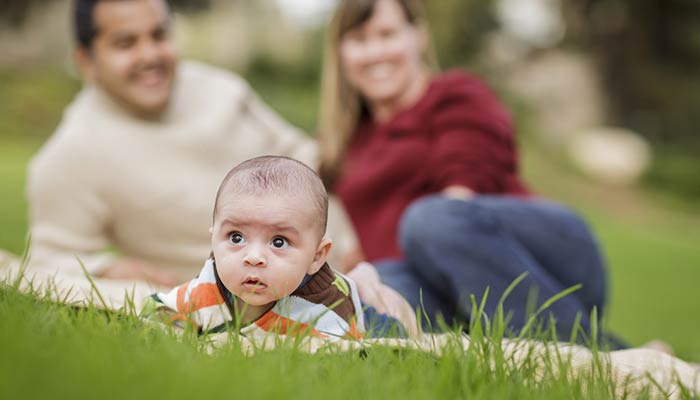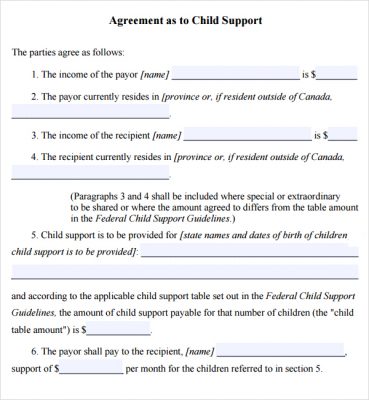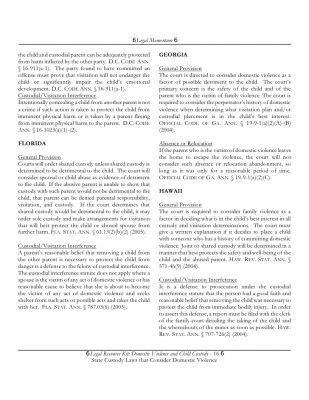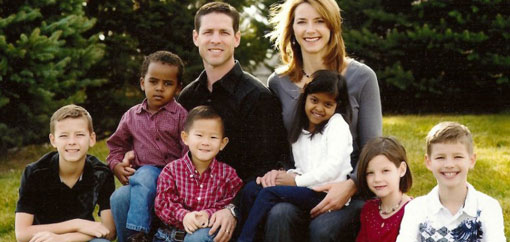Decades ago, virtually all adoptions were “closed”. An adoption is “closed” means that there is not any contact between the adoptive parents and the biological parents of the child after the adoption is completed. In fact, it could not be contact before the adoption. Currently, the trend in the adoptions made in the united States is that they are “open”, as in these the parties involved meet and often go looking once in a while.
Closed Adoption
Closed adoptions are rare, but they were regular in the past, when families usually used an agency to adopt a newborn. The adoptive family if basically put on a list and waits for the social worker to do the rest. The adoptive parents do not know where the child come from, or who were his biological parents. The child could even not be aware that he was adopted. When adoptions are closed, the files are also physically closed. Even if the adoptive parents and birthparents know each other at the time of adoption, they do not maintain contact after the process is completed. The child often does not know who are his biological parents, especially before the age of 18. Closed adoptions continue to be common when they are done internationally.
Watch video Closed Adoption
In a closed adoption, birth parents and adoptive parents work through an agency or another third party. They do not have contact with one another and care is taken to prevent each party from learning the other’s identity. While information about the child’s medical history and other important factors are provided to the adoptive parents, information about the birth parents is kept sealed. Traditionally, adoptees would need a court order to get that information released. However, since the late 1990s some states have begun to allow adoptees over the age of 18 to have the records released without a court order. This is consistent with a growing trend in this country toward open adoptions.
Open Adoption
The process of open adoption is very common today. Latter on, the adoptive parents know and maintain contact with the child’s biological parents. Most agencies advise you to have a certain degree of “openness”. It is also very common today that the biological parents help adoptive parents to choose their children. Commonly, the agency gives child’s parents the biographies of prospective adoptive parents, and the child’s parents choose a family that seems most appropriate.
Biological and adoptive parents know each other, and can keep in touch frequently during the pregnancy. Often the adoptive parents can witness the birth of the baby. Some families keep in touch through adoption agencies, especially during birthdays and the holidays. Other, even become friends and maintain that friendship.
Open Adoption Pros and Cons
For both the birthparents and adoptive parents, open adoption removes the mystery of the process and provides them with a greater level of control in decision making. The process of open adoption also allows the adoptive parents to answer the questions of their children when they the question about the identity of their biological parents and about why they were adopted. Open adoptions can also help the child come to terms with being adopted, because the child’s concerns can be addressed directly by everyone who was involved in the adoption process.
Open Adaption disadvantages
But there are also disadvantages in open adoption. Many adoptive parents come to the level of openness as a threat, and fear that the biological parents to interfere in their lives after the completion of the adoption, or worse yet, they may want the child back. The adoptive parents may also feel that the child will become confused, not knowing who “really” are his parents.
Disadvantages for Birth Parents
The open adoption experience differs with each individual.
Agencies are prepared to help each person work through issues that can include:
- Abuse of trust– The relationship with the adoptive family creates the potential for abuse of trust. The adoptive family may abuse the trust you place in them by manipulating various situations.
- Potential disappointment- The opportunity to interact with the adoptive family carries the potential for disappointment if the adoptive family does not meet expectations.
- Feelings of obligation -A birth mother may feel unduly obligated to place her child for adoption because of the financial commitment and emotional investment on the part of the adoptive family.
- Changed Mind– The adoptive family can choose to halt or terminate the adoption process at any time. This can leave the child in a limbo state and possibly result in the child being placed in foster care until other arrangements can be made.
Disadvantages for Adoptive Family
The open adoption experience can vary with each family.
For adoptive families, some possible risks and disadvantages of open adoption include:
- Additional pressure – In some cases the birthmother or birth family might want a greater level of openness than the adoptive parents. Consequently, the adoptive parents might feel under pressure to accept the demands of the birth family for fear of not getting the child.
- Unstable relationships – The adoptive family might discover that their relationship with the birth family includes a relationship with an unhealthy or emotionally disturbed birth family member.
- Additional support – The adoptive family might feel pressured to provide emotional support system for the birth family.
Disadvantages for the Adopted Child
The open adoption experience can vary with every child.
For an adopted child, possible disadvantages of open adoption include:
- Reduced ability to assimilate into family – Interaction with the birth family may make it harder for the child to assimilate into the adoptive family.
- Sense of rejection – If for some reason there is no longer any contact between the birth family and the adoptive family, the adopted child can feel rejected.
- Peer communications – The adopted child who has on-going interaction with his or her birth family can struggle with the need to explain the various relationships to his peers.
- Power struggles – The adopted child may try to manipulate the adoptive and the birth family by playing one against the other.
- Identify confusion – As the child matures, he or she might experience a greater struggle with identity from trying to make sense of family history and genealogy information involving more than one family.
The open adoption can vary with each individual. Communication continues to be the most important factor of success for all parties involved in the adoption process. As communication about wishes, desires, expectations increases, the more comfortable everyone involved will tend to be.
Watch video An adoption counselor describes how open adoptions works
A counselor from an adoption agency in Illinois, describes open adoption and addresses concerns expectant parents and adoptive parents often have about openness.









